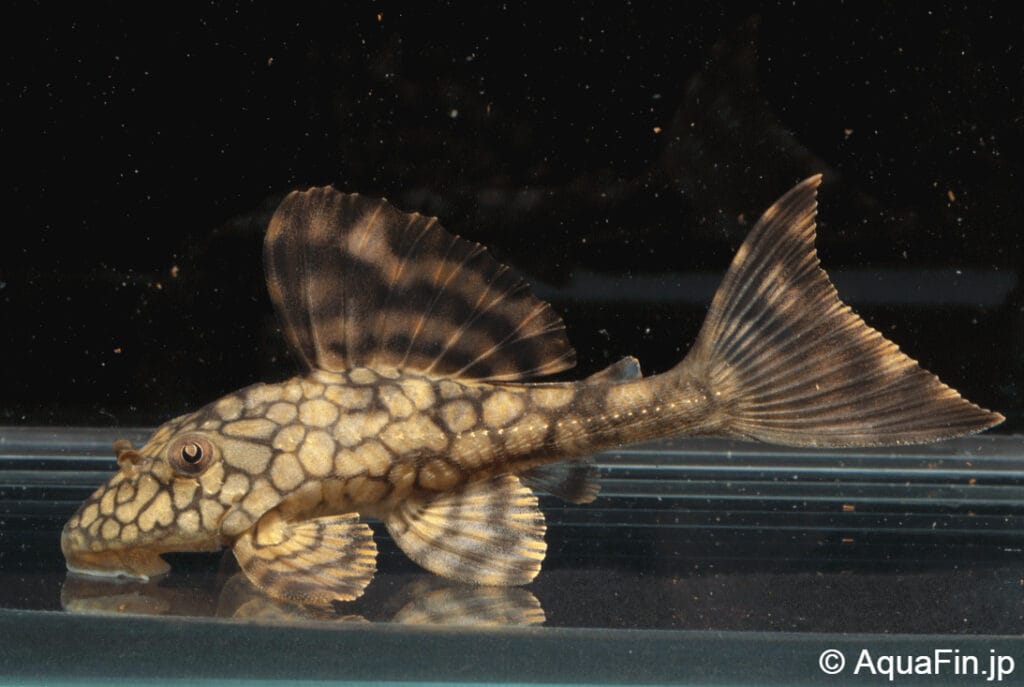







The name Hypostomus is certainly a familiar one in the aquarium hobby. Mostly associated with common, large-growing, brown Plecos mass produced for the trade and sold as cheap algae-cleaners, the genus Hypostomus as it is today actually contains a wide array of species. Given the high variability among them, the genus is likely to be split up in the future. H.faveolus, best known as L37 in the trade, is a representative from the so-called Cochliodon-group of Hypostomus. These have a higher and shorter body than the common types of Hypostomus, and several of them are also wood-eaters. L37 is a regular encounter in the hobby, and can be recognized by its beautiful honeycomb pattern.
Facts:
Name: Hypostomus faveolus (Zawadzki, Birindelli & Lima, 2008)
Trade names: L37, Honycomb Pleco, Reticulated pleco
Origin: Rio Tocantins, Rio Araguaia, Pará, Brazil
Maximum TL: 20 cm / 8”
H.faveolus grows to about 20 cm, smaller than many other Hypostomus species. The males can be recognized by their slightly longer pectoral fins, and well-conditioned females have a broader belly. They prefer tanks furnished with wood and stones, and some current. The water should be clean and well-filtered, with a temperature of 26-30 C. This is a rather tough and robust species, easy to keep if the basic requirements are met. They are mostly herbivore, but should still be fed a varied diet. Among themselves they are mostly peaceful, but males may quarrel for hierarchy and territories. Other fish are ignored. Breeding reports are rare, probably because this species is not a priority for most Pleco breeders. 150-250 eggs are laid in a cave, and cared for by the male.
More info:
